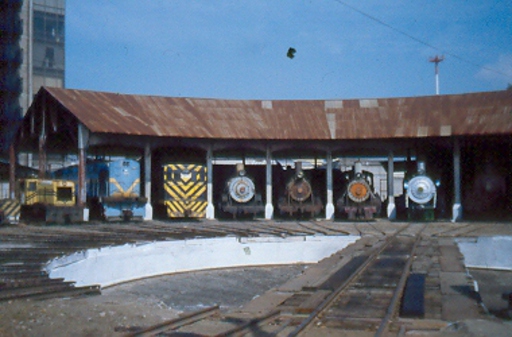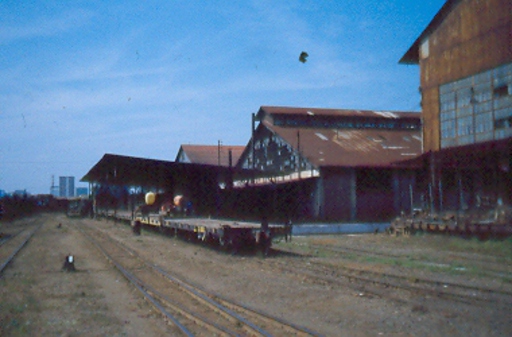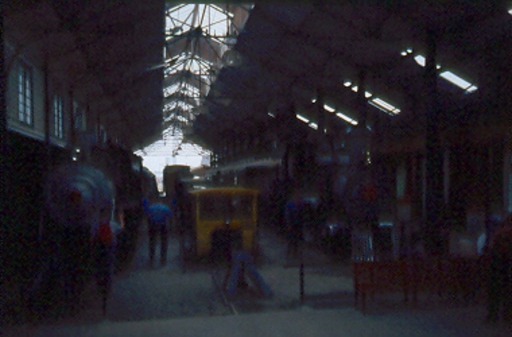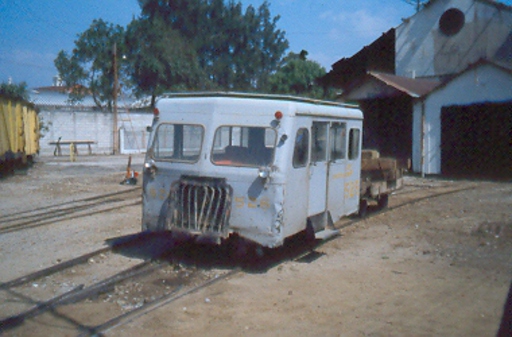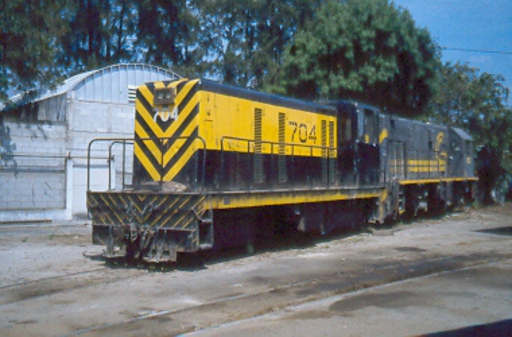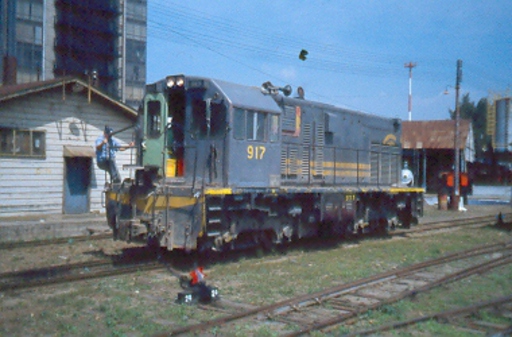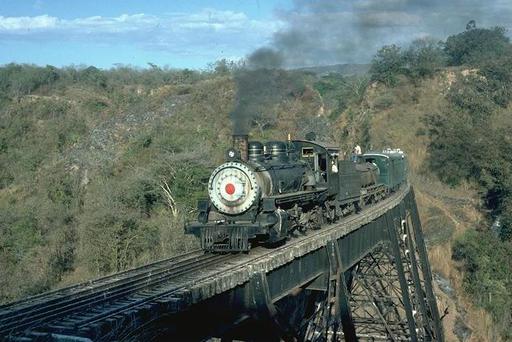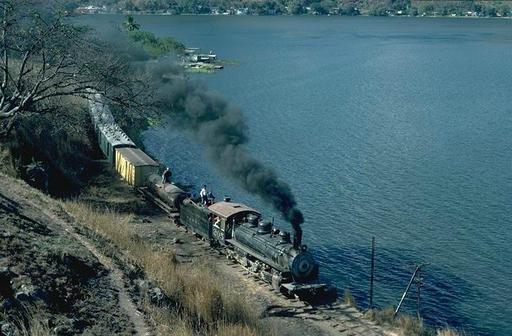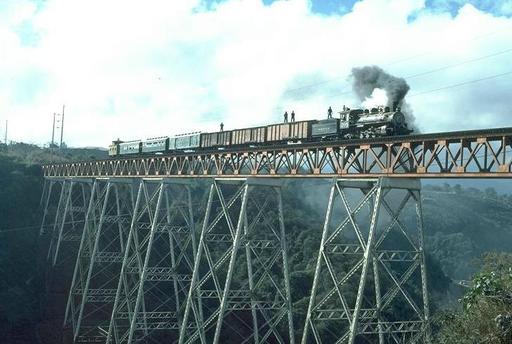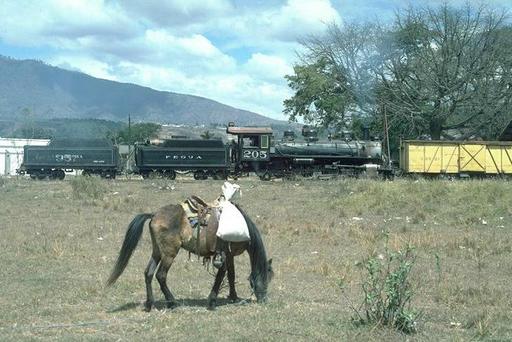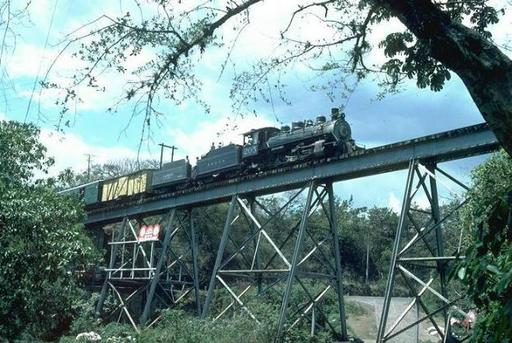Guatemala's last Railway
The oldest railway of Guatemala connects since 1877 Puerto Barrios on the Caribbean sea with the capital of Guatemala, Ciudad Guatemala - Guatemala City.
The republic of Guatemala is located in Central America, south of the Yucatán peninsula. The name originates from the toltectic word "Goathemala" which means "earth with trees. Guatemala shares border in the south east with Honduras, in the south with El Salvador, in the north with Mexico and in the east with Belize. The country has two coasts: in the east, a narrow access to the Caribbean sea and in the south west the Pacific coast. In the north east it consists of tropical rain forest, in the centre there is a highland area with volcanos at up to 4200 Meters of altitude, and the narrow and fertile stripe along the Pacific has thorough going humid tropical climate. The country has 15 million inhabitants, the surface is 110'000 square kilometre, about twice the size of Switzerland. The capital Ciudad Guatemala (Guatemala City) lies in the lower highland, with almost all the year round mild climate and temperature between 18 and 28 degrees Celsius. Guatemala City has about 1 million inhabitants. About 60% of the inhabitants are Mestices (descendants of Mayas and Europeans, mainly Spaniards), 40% are Mayas. Spanish is the official language and mother tongue of the mestizes and the Europeans living in the country. The Mayas speak usually one of the 24 Maya languages. The percentage of illiterate inhabitants is 30 pct., therefore Guatemala is considered an underdeveloped country.
After the conquest by the Spaniards the country remained a Spanish colony until 1821, thereafter part of the Central American confederation. Only in 1840 the independent state of Guatemala emerged. In the period up to 1944 the country can be declared a liberal national state. In this time the large and extensive coffee and banana farms were developed, the latter mainly by the United Fruit Company. After 1944 a ten year period of democracy emerged. Freedom of press was introduced. After 1950 President Arbenz (of Swiss origin) introduced land reforms. Thereafter followed a sequence of dictators and civil war which lasted until 1996. Since 2001 there are trade agreements with Mexico, Guatemala, Honduras and El Salvador, from 2004 onwards a customs union with El Salvador.
Main export goods is coffee. Furthermore, bananas, sugar, tobacco, rubber and cardamom play in important role, and from the end of 1990's onwards tourism.
The Railways
History and Goods Traffic
Between 1877 and 1908 the first railway line was built. It connected Guatemala City with the Pacific coast and the south western part of the country. As a second part followed the line from Puerto Barrios on the Atlantic coast to Guatemala City. Thereafter followed further lines, and at its high point there was a network of around 800 km with the track gauge of 914 mm, the largest network in Central America, without connexion to the neighbouring countries except for the line from Zacapa via Chiquimula to El Salvador which lasted until the 80's. In addition, the Pacific network at Tecun Umán borders the standard gauge (1435 mm) Mexican rail net at Ciudad Hidalgo, with both track gauges on the bridge between the two places. But this was only used for the transfer of Mexican goods wagons for discharging in Guatemala and was probably last used in the 90's. The network always operated with financial support from the state. From 1912 onwards the transport of bananas was the main base for the goods transport. IRCA, International Railway of Central America, operated about 600 km of lines. In 1933 IRCA and UFCO, United Fruit Company, made an agreement for the costs of the banana transport. In 1945 UFCO stopped the banana plantations, and the rights returned to the state. From 1950 onwards, eight axle diesel locomotives by General Electric were introduced, but the last steam locomotives continued for another 30 years. From 1968 onwards FEGUA - Ferrocarriles de Guatemala was the operator, but in March 1996 rail transport stopped as it was loosing money.
1997 an offer by RDC, Railway Development Corporation of Pittsburgh/USA was accepted. Compania Desarrolladora Ferroviária Guatemala S.A. was registered as a company and the railway called Ferrovías Guatemala. The company has a concession for 50 years. As the most important route the railway concentrated on the 300 km between Guatemala City and Puerto Barrios. In December 1999 the line opened again for goods traffic. Normally, one train a day is operated in each direction with a running time of 12 hours. The poor state of the track enforces speed restrictions down to 5 km/hour In the first year of operation 63'000 tons of goods were transported. Passenger traffic was only considered possible if there was sufficient capacity.
Two classes of locomotives are in use: General Electric type GE U10B (built under license by Babcock-Wilcox, 4 axles), and Alco/MLW (6 axles). Between Puerto Barrios and Zacapa, the 6 axles Alco locomotives are used, and at Zacapa they are exchanged for the 4 axles GE locomotives, as the tight curves of the mountain section pose problems for the relatively long Alco locomotives. The steam engines are used as a reserve.
Today Ferrovías Guatemala has three depots and one main workshop. The main depot and the central workshop are at Guatemala City. One depot each is at Zacape and Puerto Barrios.
On the section at present out of service from Guatemala City to the Pacific port at Puerto Quetzal there may possibly be some functioning diesel locomotives stationed at Esquintla, about 60 km from Guatemala City, which can be put into service if this section is taken into use again.
Steam trains for rail fans
In the years 1997 and 1998 a steam train was operated for rail fans, which however failed to operate in 1999 due to hurricane damages. From 2000 onwards there were again yearly passenger trips with steam locomotives.
Photos
The photos of the workshop and the diesel locomotives at Guatemala City were taken by FLB chairman Peter Lais in March 2005. The pictures of the steam trains were taken by FLB vice chairman Patrick Rudin in 1996. Together, they give a good impression of this interesting railway, with steep gradients and spectacular bridges. This railway is really in the sense of the FLB targets. The goods transport reduces the dependence from the road transport, and with the tourist train project visitors to the country get a good view of this beautiful country and thus further tourism which is of great importance for this country.
Sources
Guatemala on Wikipedia
Trains Magazine
Guatemala on Railroad Developement Corporation
Descriptions about Guatemala from Theo Stolz (German)
Descriptions about Guatemala from Jim Hearne
Descriptions about Guatemala from Rob and Yuehong Dickinson
